See a LinkedIn Catfishing Scam
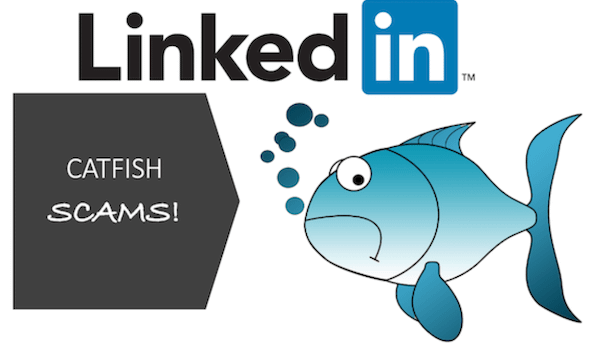
Here is your warning. I’m sure many of you have heard about LinkedIn catfishing scams. But just in case you haven’t, catfishing, according to an article on LinkedIn, is “a deceptive activity where a person creates a fictional persona or fake identity on a digital platform, usually targeting a specific victim. A catfish scam may be used for financial gain, to compromise a victim in some way, as a way to intentionally upset a victim, or to fulfill a fantasy of taking on a different persona.” So, do you want to see a LinkedIn catfishing scam attempted? Here you go.
I’ve been a LinkedIn user for decades, but lately I’ve noticed a real spike in the number of fake accounts trying to get me to connect outside the platform, usually with WhatsApp. It’s annoying, but I’ve known about this for years and I tend to just ignore it and move on. But when the latest scammer slid into my Inbox a couple days ago, I thought I would take a few screen shots to share with you what this actually looks like. This person is posing as a “Deborah.” Here is how “her” LinkedIn catfishing scam message began:
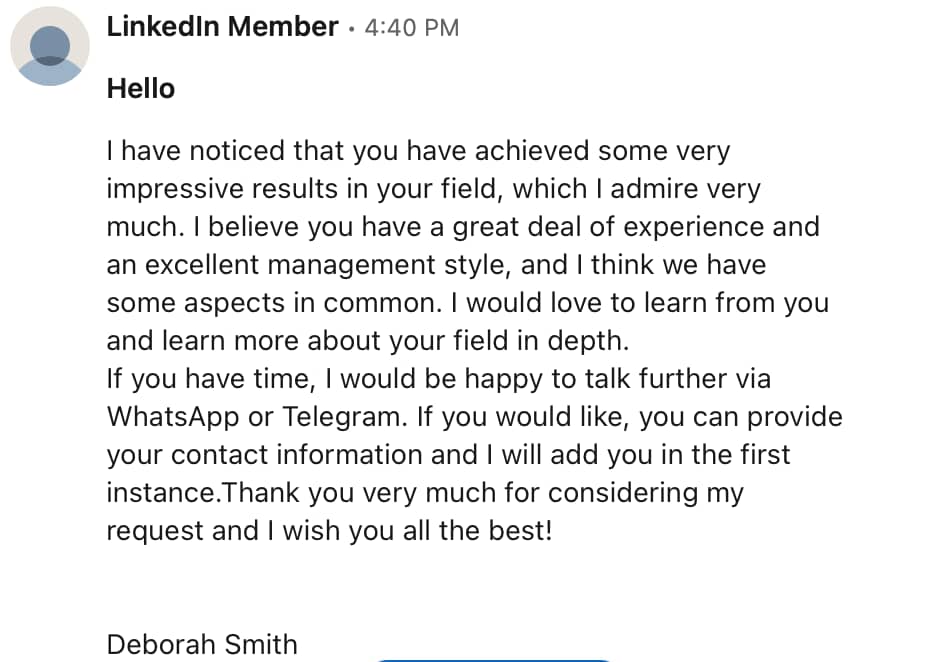
“Deborah” has no active profile at all. If you click on the “LinkedIn Member” link, nothing comes up. She actually started out a bit more boldly than most. She immediately asks to connect on WhatsApp or Telegram. Don’t do it. At best you will be wasting your time.
As mentioned above, I generally just delete these. But for the sake of a quick tutorial about LinkedIn Catfishing scams, I thought I would just share with other what these people usually do. So I sort of played along for a few minutes.
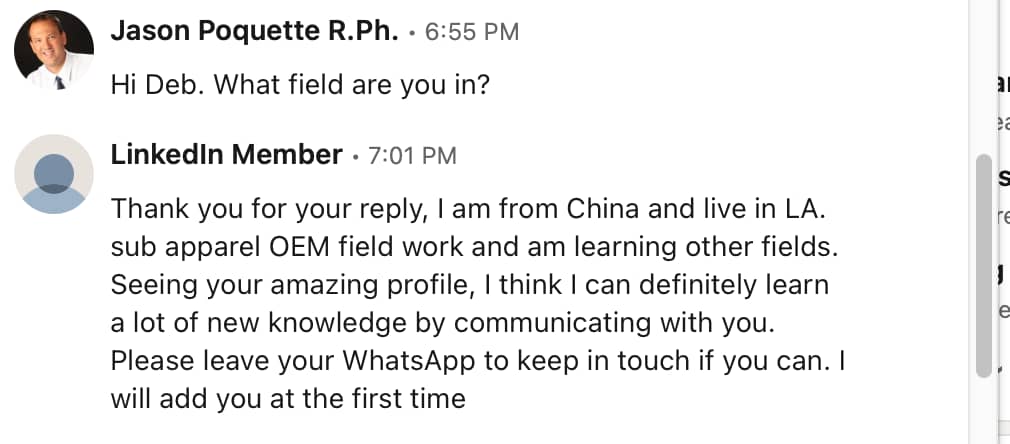
So, as you can see above, I asked “Deborah” (remember…there is NO Deborah…that is just the name this scammer has chosen) about the field of work “she” is in. The scammer claims to be from China, and is living in L.A. (why do they all live in L.A.???). She sees my “amazing” profile (flattery will get you everywhere?) and thus again makes her plea for sharing a WhatsApp number with her. We are now, apparently, old friends, and will want to “keep in touch.” LOL.
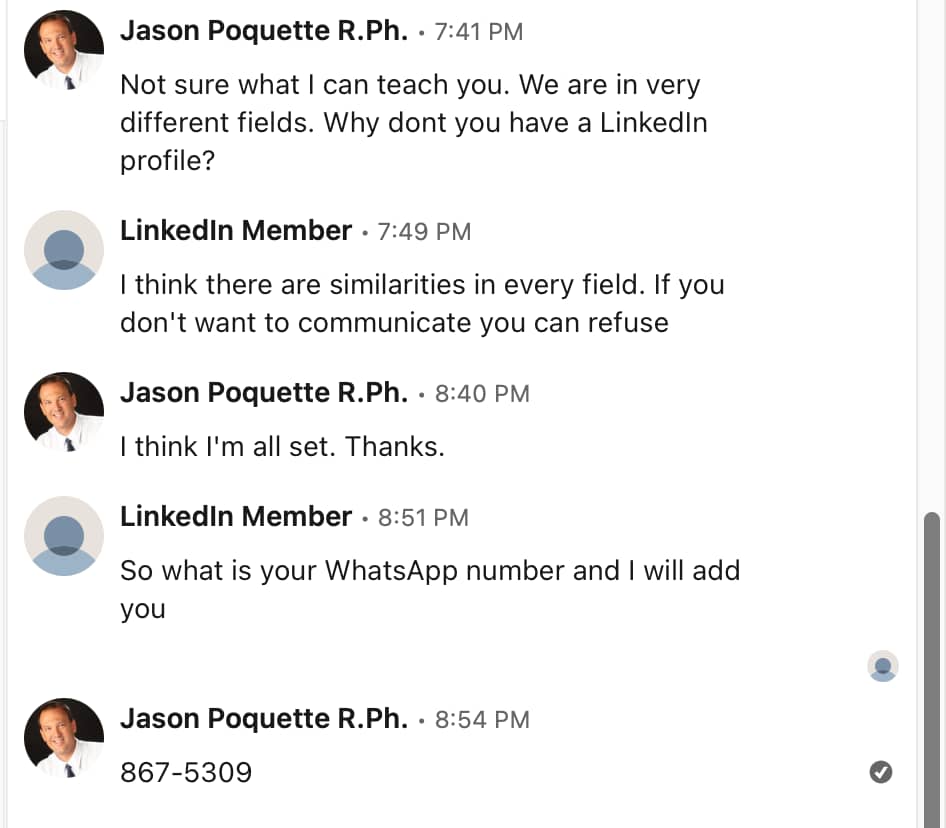
So I suggested we really wouldn’t have much to talk about, and told her that I am “all set.” But “Deborah” is persistent. She tries to make me appear rude or unfriendly, saying “if you don’t want to communicate, you can refuse.” Well, I do. But 10 minutes later, you-know-who is back asking for my WhatsApp again. So I played along and gave her 867-5309. That was a fun song. Do you remember it? Performed by Tommy Tutone back in 1981. The 80’s were great.

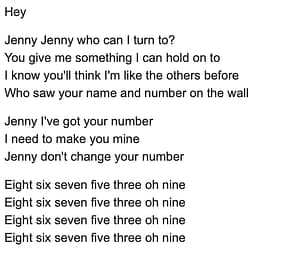
Poor “Deborah”. She didn’t get the humor of my response. So after maybe 10 minutes she responds like this:
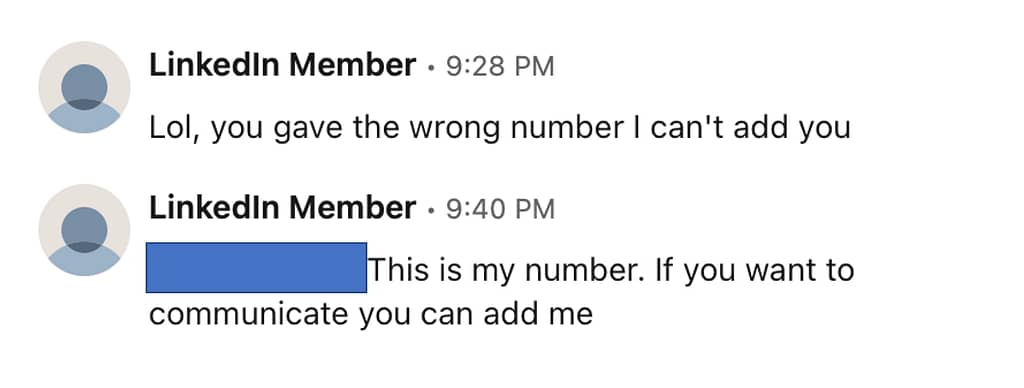
Yep. She decided to just hand over “her” “phone number” (blanked out in the above image to avoid anyone from using it). Of course, these phone numbers are typically what are called “burner” phone numbers. The scammer gets them from Google Voice, or a burner app, so that they are hard to trace.
By this point in the conversation I’m getting bored. I’m not going to start talking with the person on WhatsApp, and I’ve actually got work to do. So I “archive” their conversation and that is it.
THE END!
More Info on Catfishing Scams
For more information on Catfishing, you may want to reference some of the following:
NORTON has a good article that explains the nature and dangers of catfishing scams
ABC news did a piece about the danger of catfishing and our teens
This was a disturbing story from Vice News posted a year ago and has over 1M views
and finally…
THIS STORY became a Netflix documentary about the Notre Dame linebacker who got caught up with a catfish
Post Views: 1,224
Catfishing LinkedIn Scams
Last modified: May 17, 2023


